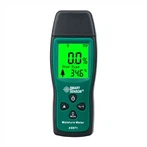What auxiliary materials are needed when the soldering station is working, and what are their functions
1. Tweezers
The main function of the tweezers is to conveniently pick up and place the chip components. For example, when soldering chip resistors, you can use the tweezers to hold the resistors and place them on the circuit board for soldering. The tweezers require a sharp and flat front end for easy gripping of components. In addition, for some chips that need to be protected from static electricity, anti-static tweezers are required.
2. Suction tin strip
When soldering SMD components, it is easy to have too much tin.
Especially when soldering dense multi-pin SMT chips, it is easy to cause two adjacent pins or even multiple pins of the chip to be short-circuited by solder. At this time, the traditional tin absorber is useless, and a braided tin absorber is needed at this time.
3. Rosin
Rosin is the most commonly used flux during soldering, because it can precipitate oxides in the solder, protect the solder from oxidation, and increase the fluidity of the solder. When soldering in-line components, if the components are rusty, first scrape them up, put them on the rosin and iron them with a soldering iron, and then tin them. When soldering SMD components, rosin can also be used as a tin-absorbing belt with copper wire in addition to the role of soldering.
4. Solder paste
Solder paste can be used when soldering iron parts that are difficult to tin, which can remove oxides on the metal surface, which is corrosive.
When soldering SMD components, it can sometimes be used to "eat" solder to make the solder joints shiny and firm.
5. Heat gun
A heat gun is a tool that uses the hot air blown out of its gun core to weld and disassemble components. The process requirements for its use are relatively high.
Heat guns can be used for everything from removing or installing small components to large integrated circuits. In different occasions, there are special requirements for the temperature and air volume of the heat gun. If the temperature is too low, the components will be soldered, and if the temperature is too high, the components and circuit boards will be damaged. Excessive air flow can blow away small components. For ordinary patch welding, a heat gun may not be used, so I won't describe it in detail here.
6. Magnifying glass
For some SMD chips with extremely small and dense pins, it is necessary to check whether the pins are soldered normally and whether there is a short circuit after soldering. At this time, it is very laborious to use the human eye, so a magnifying glass can be used to check each The welding condition of the pins.
7. Alcohol
When using rosin as a flux, it is easy to leave excess rosin on the board. For the sake of appearance, you can use alcohol cotton balls to wipe off the residual rosin on the circuit board. Scrubs, glue, etc. I won’t go into details here, and friends who have the conditions can learn about it and use it in practice.






